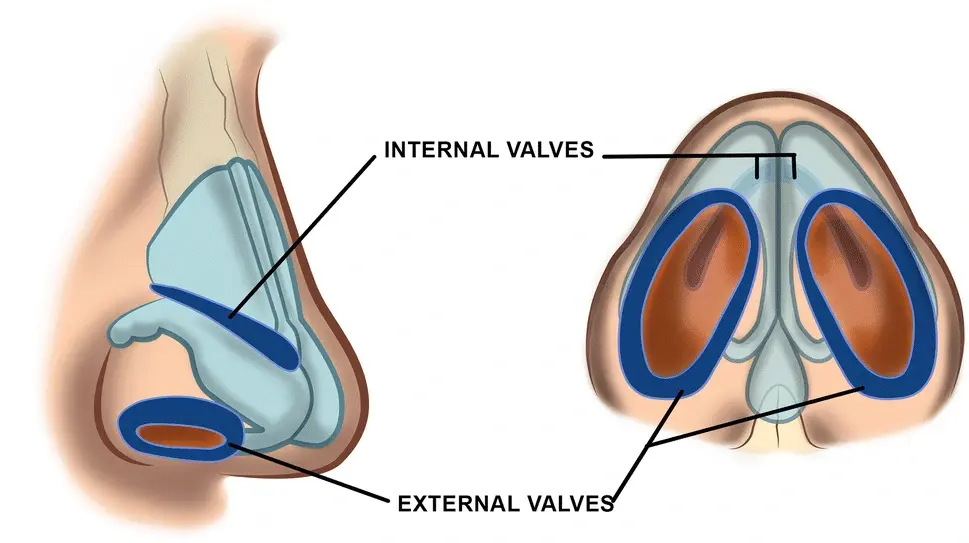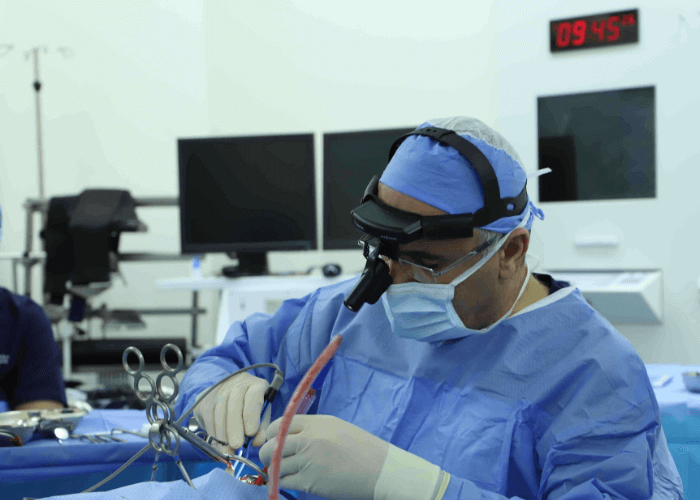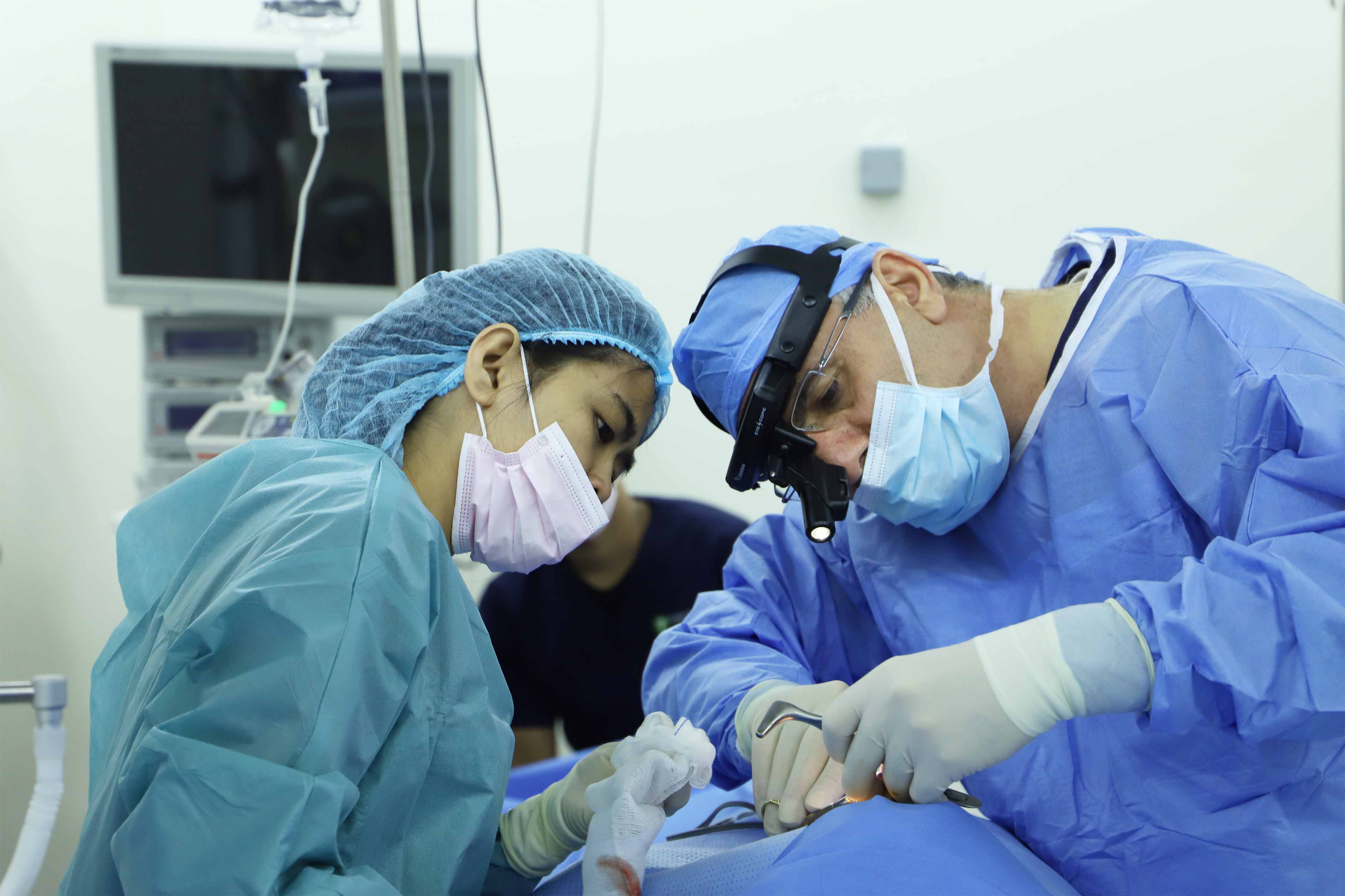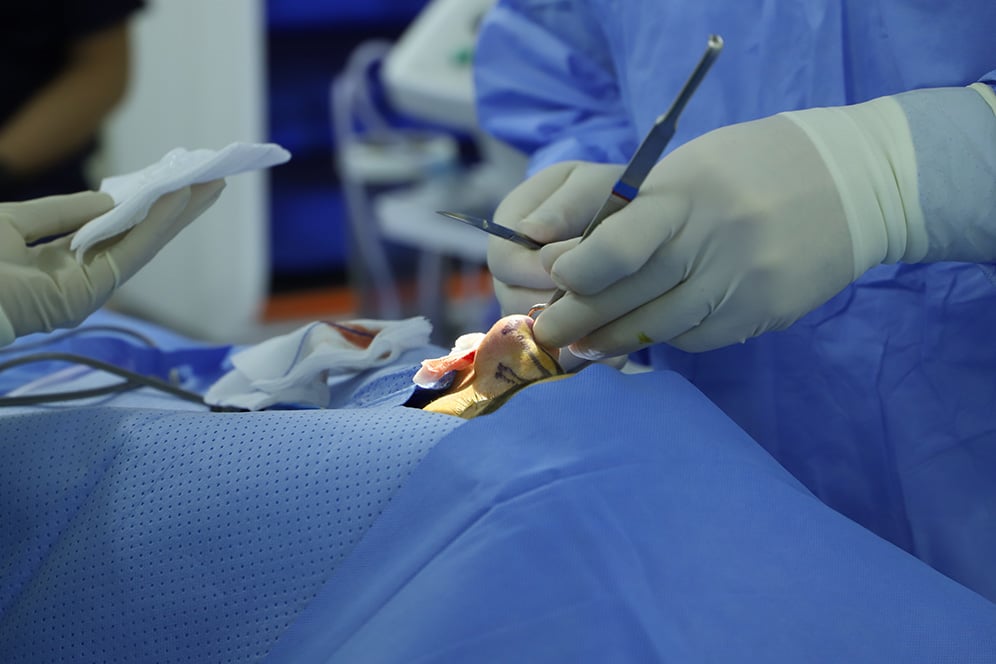Nasal Valve Collapse at DRHC Dubai ENT Clinic
What is Nasal Valve Collapse?
Nasal valve collapse occurs when the narrowest part of the nasal airway weakens or collapses, leading to difficulty breathing through the nose. This condition can result from structural abnormalities, previous nasal surgery, trauma, or aging. At DRHC Dubai, our ENT specialists offer advanced diagnostic and treatment solutions to restore proper nasal function and improve your breathing.
Types of Nasal Valve Collapse
Your nasal valve consists of two major sections, the internal nasal valve and the external nasal valve. They’re located at different places within your nasal cavity and surrounded by different supporting structures.
- Internal nasal valve collapse: This is the most common type of nasal valve collapse. Your internal nasal valve is the passageway in the middle of your nose.
- External nasal valve collapse: Your external nasal valve is at the bottom of your nose, near your nostrils. This type is rarer, but it’s easier to see because it causes one or both of your nostrils to collapse when you breathe in through your nose.
Symptoms of Nasal Valve Collapse
- Chronic nasal congestion
- Difficulty breathing through the nose
- Increased nasal obstruction during inhalation
- Snoring and disrupted sleep
- Reduced exercise tolerance due to limited airflow
- External nasal deformity or inward collapse of nasal walls
Causes and Risk Factors
- Previous nasal surgery (e.g., rhinoplasty, septoplasty)
- Trauma or injury to the nose
- Aging leads to weakened cartilage
- Congenital structural issues causing narrow nasal passages
- Chronic inflammation due to allergies or infections
Diagnosis of Nasal Valve Collapse
At DRHC Dubai, our specialists use advanced diagnostic methods to assess nasal airflow and identify nasal valve collapse:
- Physical Examination: Assessing nasal structure and airflow resistance.
- Cottle Maneuver: A simple test where pulling the cheek laterally improves airflow, confirming nasal valve dysfunction.
- Imaging (CT Scan): To evaluate the extent of collapse and rule out other nasal issues.
Treatment Options for Nasal Valve Collapse
1. Non-Surgical Treatments
- Nasal Strips: Adhesive strips are applied externally to widen nasal passages.
- Nasal Dilators: Internal devices that keep the nasal airways open
- Corticosteroid Sprays: Reduce inflammation and improve airflow.
- Allergy Management: If allergies contribute to nasal obstruction.
2. Surgical Treatments
Nasal Valve Repair Surgery
- Strengthens weakened nasal valve areas to restore airflow.
- May involve cartilage grafting from the ear or rib.
Functional Rhinoplasty
- Addresses structural deformities and improves both the function and appearance of the nose.
Septoplasty with Nasal Valve Correction
- Corrects a deviated septum while reinforcing nasal valve integrity.
Minimally Invasive Procedures (Implants or Sutures)
- Bioabsorbable nasal implants or suture techniques help stabilize the nasal valve with minimal downtime.
Recovery and Post-treatment Care
- Minimal swelling and discomfort after surgery.
- Avoid strenuous activities for 1–2 weeks.
- Use prescribed medications to reduce inflammation.
- Follow-up visits to monitor healing progress.
Why Choose DRHC Dubai for Nasal Valve Collapse Treatment?
- Expert ENT surgeons specialize in nasal airway reconstruction.
- Advanced diagnostic technology for accurate assessment.
- Customized treatment plans based on patient needs.
- State-of-the-art surgical techniques ensure optimal outcomes.
Click here for ENT surgical packages
.png?width=281&height=59&name=bookanappointment%20(1).png)
Dubai ENT clinic—If you are looking for an ENT specialist in Dubai, DRHC provides experienced and leading ENT doctors for healthy treatment. To book an appointment, please call +97142798200 today!




.png?width=281&height=59&name=bookanappointment%20(1).png)
.jpg?width=1080&height=1080&name=DR%20HATEM%20(1).jpg)



